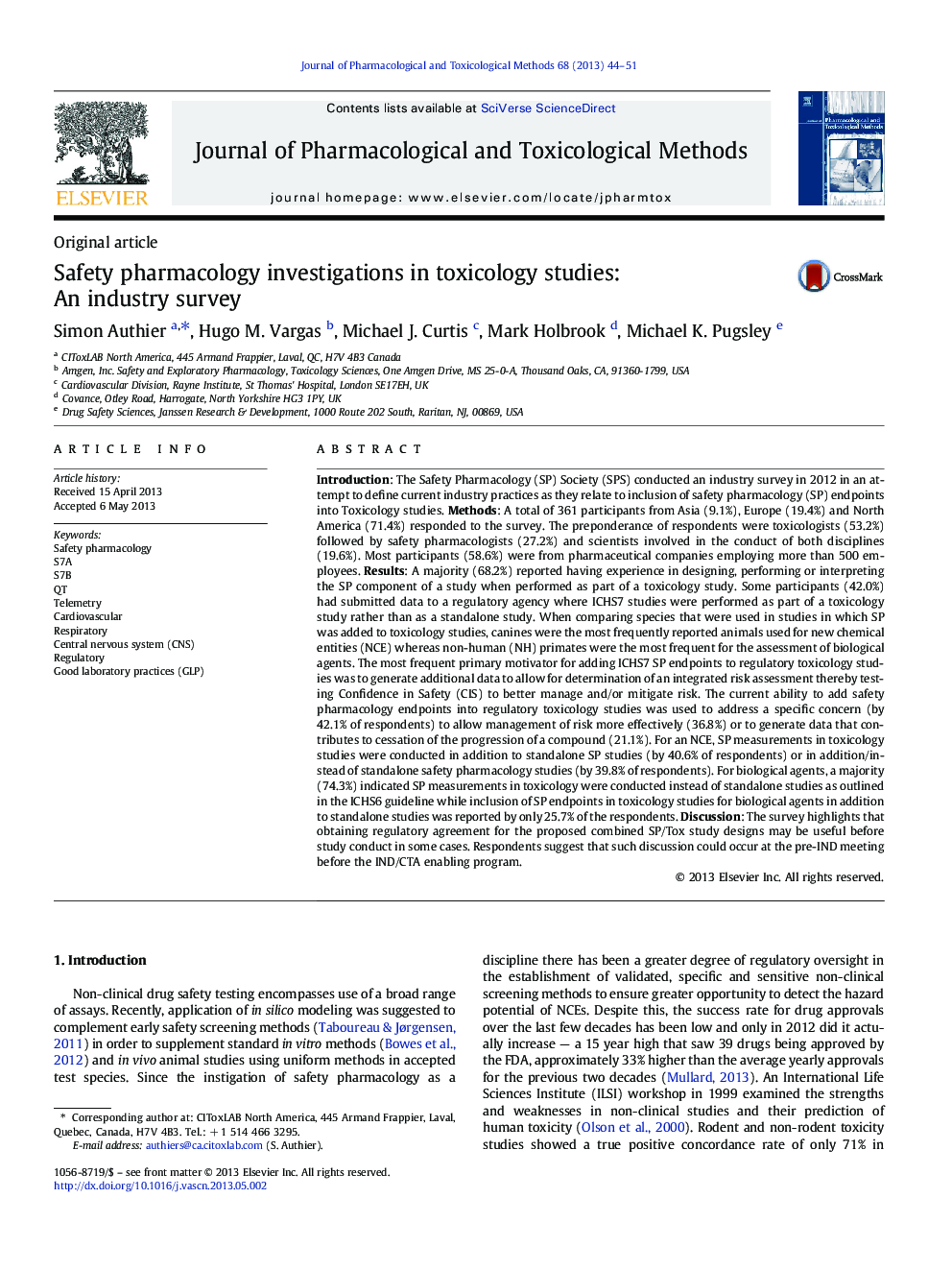| Article ID | Journal | Published Year | Pages | File Type |
|---|---|---|---|---|
| 5841018 | Journal of Pharmacological and Toxicological Methods | 2013 | 8 Pages |
Abstract
Introduction: The Safety Pharmacology (SP) Society (SPS) conducted an industry survey in 2012 in an attempt to define current industry practices as they relate to inclusion of safety pharmacology (SP) endpoints into Toxicology studies. Methods: A total of 361 participants from Asia (9.1%), Europe (19.4%) and North America (71.4%) responded to the survey. The preponderance of respondents were toxicologists (53.2%) followed by safety pharmacologists (27.2%) and scientists involved in the conduct of both disciplines (19.6%). Most participants (58.6%) were from pharmaceutical companies employing more than 500 employees. Results: A majority (68.2%) reported having experience in designing, performing or interpreting the SP component of a study when performed as part of a toxicology study. Some participants (42.0%) had submitted data to a regulatory agency where ICHS7 studies were performed as part of a toxicology study rather than as a standalone study. When comparing species that were used in studies in which SP was added to toxicology studies, canines were the most frequently reported animals used for new chemical entities (NCE) whereas non-human (NH) primates were the most frequent for the assessment of biological agents. The most frequent primary motivator for adding ICHS7 SP endpoints to regulatory toxicology studies was to generate additional data to allow for determination of an integrated risk assessment thereby testing Confidence in Safety (CIS) to better manage and/or mitigate risk. The current ability to add safety pharmacology endpoints into regulatory toxicology studies was used to address a specific concern (by 42.1% of respondents) to allow management of risk more effectively (36.8%) or to generate data that contributes to cessation of the progression of a compound (21.1%). For an NCE, SP measurements in toxicology studies were conducted in addition to standalone SP studies (by 40.6% of respondents) or in addition/instead of standalone safety pharmacology studies (by 39.8% of respondents). For biological agents, a majority (74.3%) indicated SP measurements in toxicology were conducted instead of standalone studies as outlined in the ICHS6 guideline while inclusion of SP endpoints in toxicology studies for biological agents in addition to standalone studies was reported by only 25.7% of the respondents. Discussion: The survey highlights that obtaining regulatory agreement for the proposed combined SP/Tox study designs may be useful before study conduct in some cases. Respondents suggest that such discussion could occur at the pre-IND meeting before the IND/CTA enabling program.
Keywords
Related Topics
Health Sciences
Pharmacology, Toxicology and Pharmaceutical Science
Pharmacology
Authors
Simon Authier, Hugo M. Vargas, Michael J. Curtis, Mark Holbrook, Michael K. Pugsley,
